There are different types of lighting fixtures. However, none beats recessed lights in giving a room a stylish look without giving away the whole part of the lighting fixture. But, the non-IC rated light has been a cause of fires in many houses. It is because concealing the lights (especially under insulation) will likely overheat the ceiling and cause fires.
Therefore, we will study how to prevent accidents synonymous with non-ic-rated fixtures by looking at IC-rated lights. Stay with us for more on this.
What is the IC Rating for the Recessed Light?
IC-rated light fixtures are recessed lighting fixtures with an insulation contact. Hence, you can use such light bulbs on an insulated ceiling without risking overheating the ceiling. The wattage for common types of lights with this heat protection property is 75 watts, although you may find others with a different rating.
However, the maximum wattage for most IC-rated fixtures is 100 watts. Hence, if you limit the wattage to this maximum rating, the fire-resistance rating will protect the lights from hot temperatures.
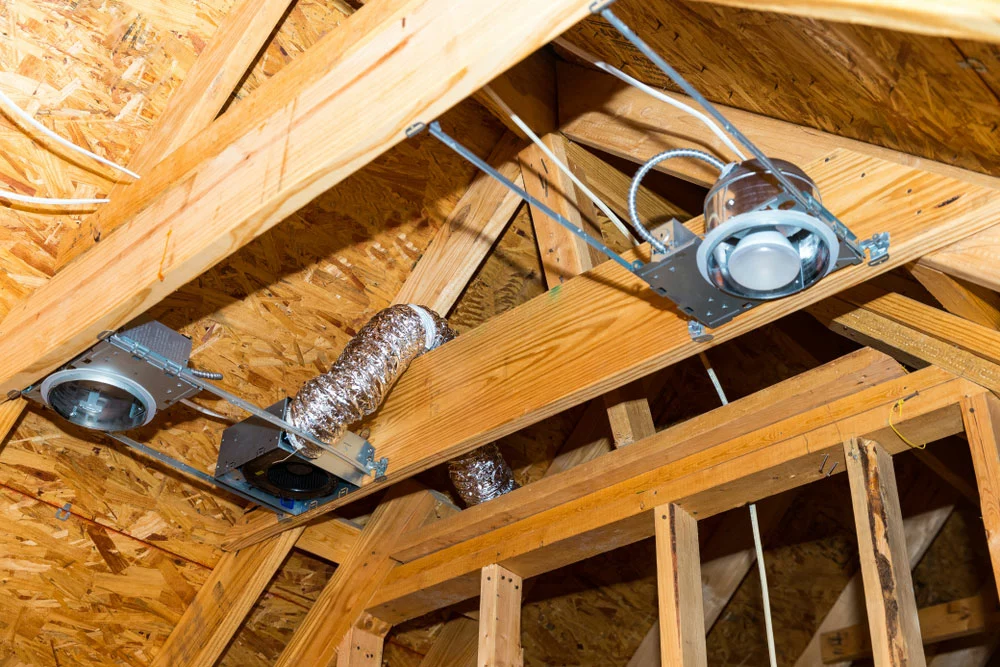
Electrical recessed can lights and vents.
How the Insulation Works in IC-Rated Fixtures
If you’re using cheap incandescent fixtures, they will produce a lot of heat. Direct contact of this heat with the ceiling is a precursor for fire accidents. Also, you’ll find that for non-ic-rated lighting, there’s no mechanism for heat dissipation.
However, IC-Rated recessed light fixtures have the double-can makeup. It creates space between the two layers which acts as the thermal insulation layer. Also, only the outer can directly interact with the insulation material.
Hence, it aids heat dissipation and keeps the bulb fixture cool enough to prevent a fire outbreak. Therefore, the heat flow in IC-rated fixtures is seamless, and there’s no chance of some accumulating within the system.
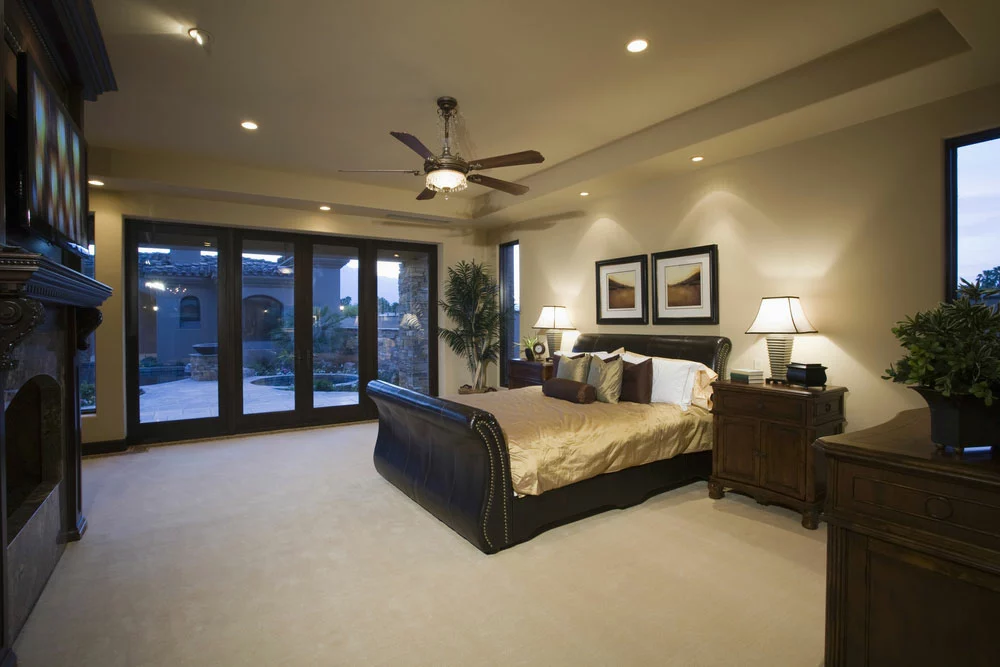
Recessed bedroom lights
Is your Recessed Lighting IC-AT Rated
IC-rated standard downlights will save you a lot in preventing the chances of a fire accident. However, there are IC-AT-rated lighting fixtures. The ‘AT’ means that in addition to the bulb fixture being IC-rated, it is also airtight.
So how do you confirm if your lighting fixture is IC-rated and AT-rated? Follow these steps:
- You can check the fixture with trim from the attic side. Often, some will have a label indicating the rating but if you don’t find it, go to step 2.
- Now remove the trim and the bulb to expose the recessed lighting can. If your can has holes or slits, then it is not IC-rated. If it has a label, check out for the “IC” or “IC-AT” rating.
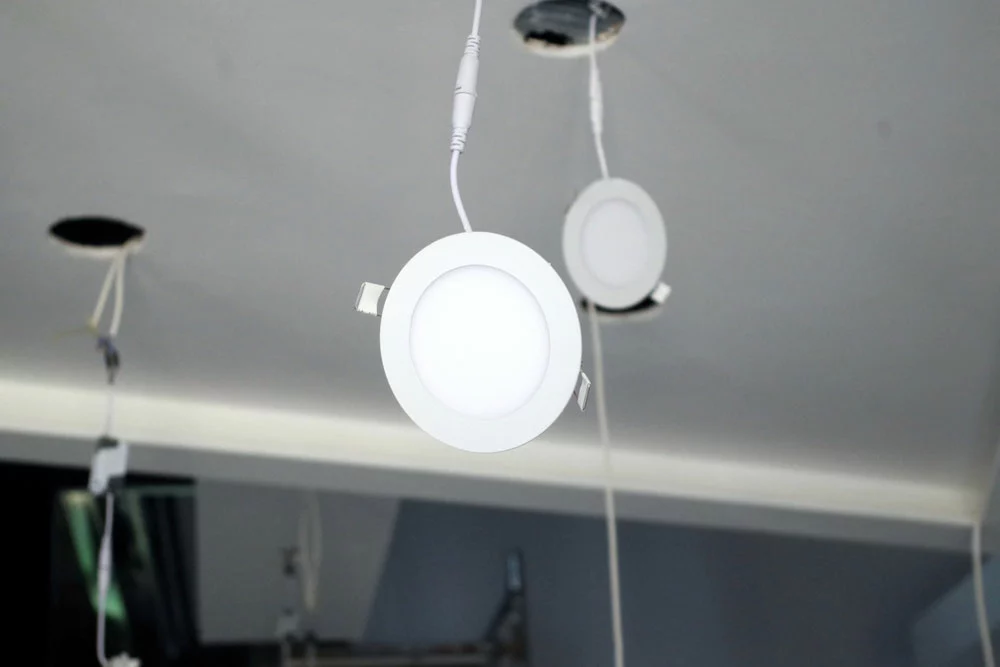
Installing Recessed Light Fixtures
Check if your Recessed Light fixture leaks air.
A fixture with trim that leaks air means that it lacks full insulation. Therefore, you need to confirm if the recessed fixture leaks air by checking from the attic. If you note the light coming off the recessed fixture, it is not airtight.
Importance of IC-rated Recessed Light
Here are some top reasons you should settle on recessed lighting fixtures with an IC and AT rating.
a.) Safety
The major fire risks to electrical appliances are usually due to poor insulation. Hence, having an IC-rated recessed light enclosure means your system is safe from accidental fires.
b.) Saves Money
The fire-rated enclosure on your recessed lighting systems will also save you Money. You’ll save on repair costs as the recessed light enclosure is safe from moisture condensation, which causes damage to electrical parts.
c.) Energy Efficiency
An IC-rated fixture is also energy efficient as there’s no heat lost to the surrounding. Besides, such a fixture eliminates the chances of blinking LED lights that are synonymous with overheating bulbs.
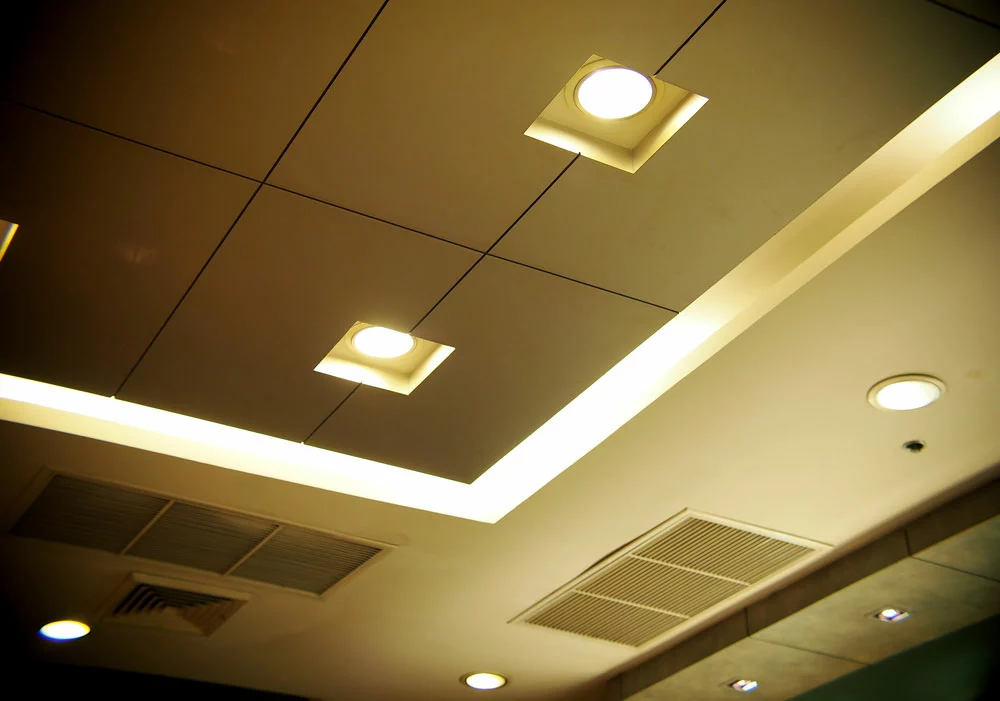
Recessed lights
Differences between Non-IC-rated and IC-rated Recessed Lights
Now let us explore the main differences between these types of light fixtures.
1. Usage
Your non-IC-rated recessed light shouldn’t come into contact with insulation. Preferably, ensure you leave a 3-inch space between the ceiling and the light fixture to allow heat flow.
However, you don’t have to undertake these precautions with IC-rated fixtures as they are feasible for use in a fire-rated and uninsulated ceiling.
2. Acquisition Cost
As you’d expect, an IC-rated recessed fluorescent fixture will cost more than a non-IC-rated downlight. However, the non-ic fixture leaves you at the risk of fire hazards and will also cost you more in the long run on cooling costs.
3. Appearance
Most IC-rated lighting fixtures have a silver color. On the other hand, non-IC fixtures are white.
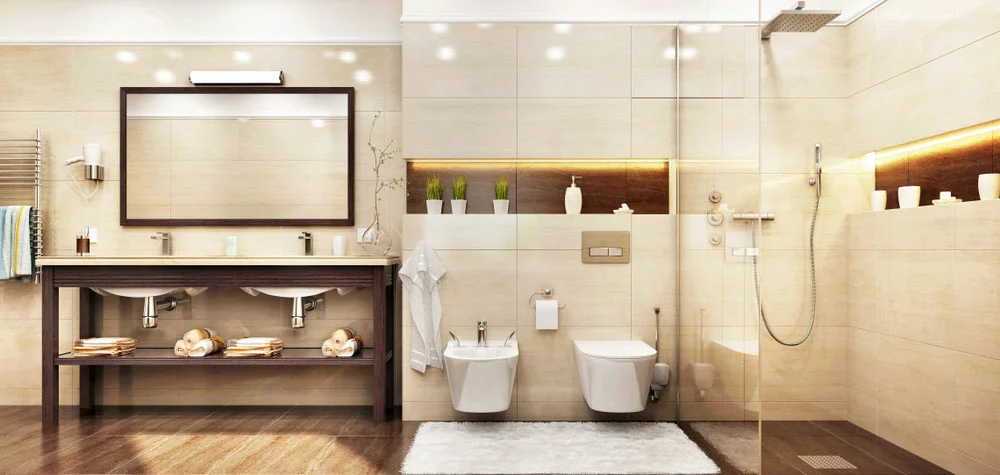
Recess lights in the bathroom
Why Insulation Near the IC Rating Recessed Lighting is Important
It is vital to ensure that even though you have IC-rated recessed lights, there is sufficient insulation around them. Primarily proper insulation helps in two main ways:
- First, it reduces the probability of fire accidents, especially if minimal air is escaping from the fixture.
- Also, insufficient insulation means that the HVAC system must overwork to cool the house. Hence, insulation saves you Money on electricity costs.
A thermal imaging camera is handy in identifying if there’s adequate thermal insulation. Hence, you need to beef up your attic insulation by installing a system that best suits your area of residence.
For instance, if you reside in Florida, an insulation of between R30-R49 is the most ideal. Remember, the higher the R-value, the better the level of insulation. Also, if you’re in warm areas, an attic ventilation fan will come in handy in cooling the attic in the summer.
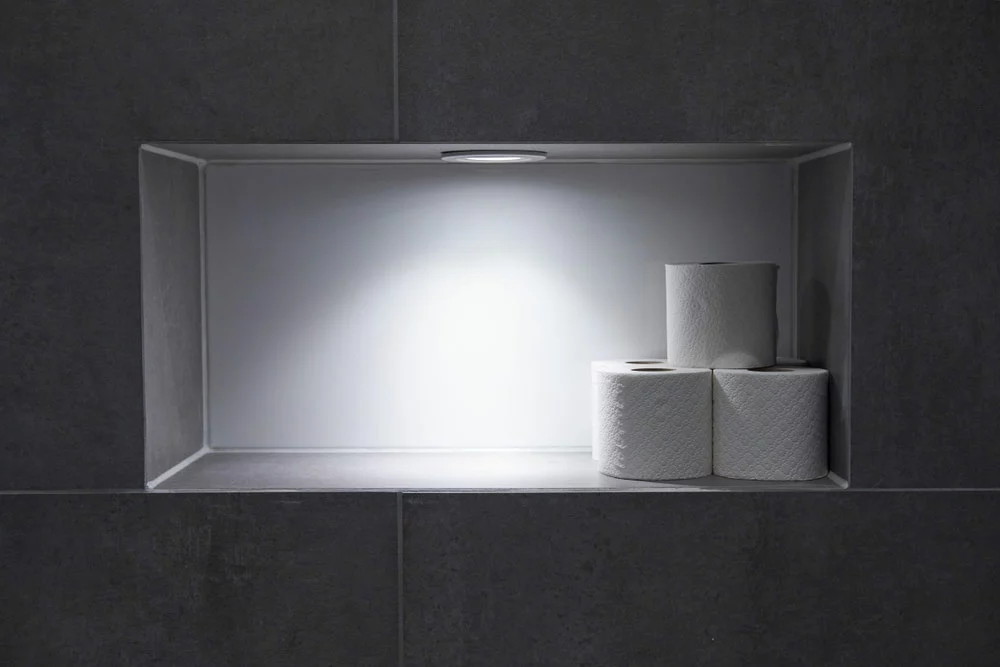
Recessed lights in the bathroom
My Recessed Lighting is Non-IC Rated
If your light is non-ic rated, the recessed lighting fixture is a ticking time bomb, especially in an insulated ceiling. It predisposes you to fire hazards.
Therefore, to minimize the risk, ensure no direct contact of the non-ic fixtures with the insulation. Non-IC-rated lighting fixtures don’t require an insulation cover as it will hamper heat dissipation.
Besides, insulation reduces the non-IC downlights’ lifetime and may lead to ceiling discoloration.

Don’t insulate non-IC-rated recess lighting fixtures
However, if you intend to install non-ic-rated lights in a non-insulated space, there’s no problem. There will be sufficient heat dissipation in such a setting, thus no risk of fire hazards.
Summary
We’ve explicitly highlighted the upsides of IC-rated fixtures and compared them to non-IC-rated ones. Also, we hope this guide gives you an elaborate understanding of why recessed lighting fixtures are IC-rated. Thanks for your time, and consider checking out our other recessed lighting guides.
